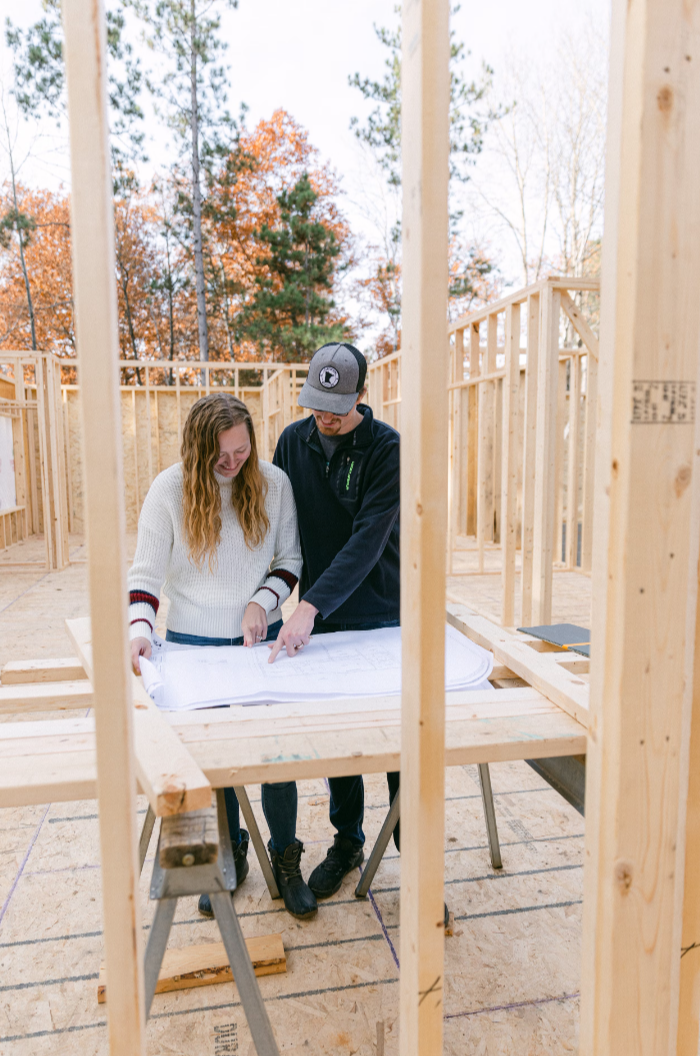Building an accessory dwelling unit (ADU) can be an exciting and rewarding endeavor. ADUs offer additional living space, potential rental income, and increased property value. However, navigating the home-building process can be complex, especially for first-time builders. In this guide, we’ll walk you through the key stages of building an ADU, from initial planning to project completion.
Understanding ADUs and Their Benefits
An accessory dwelling unit is a secondary housing unit on a single-family residential lot. ADUs can take various forms, with one of the most popular being the detached ADU. They provide flexible living options and can serve as a rental unit, guest house, or living space for family members.
Benefits of Building an ADU
- Increased Property Value: ADUs can significantly boost your property’s value.
- Rental Income: Renting out your ADU can provide a steady income stream.
- Flexible Living Arrangements: ADUs are perfect for housing aging parents, adult children, or guests.
- Sustainable Living: ADUs often require less energy and resources than traditional homes, promoting sustainable living.
Step 1: Getting Started with Initial Planning and Research
Determine Your Needs and Goals
Before diving into the ADU construction process, it’s crucial to identify your needs and goals. Consider who will live in the ADU and how it will be used. Determine the size and layout that will best suit your needs.
Research Local Regulations and Zoning Laws
ADU regulations vary significantly by location. Research local zoning laws, building codes, and permitting requirements. Some areas have specific regulations regarding the size, height, and setback of ADUs. Understanding these rules early on can save you time and prevent costly delays.
Plan Your Budget
Establishing a budget is a critical step in the planning process. Consider all potential costs, including design, permits, construction, utilities, and landscaping. Having a clear budget will help you make informed decisions and keep your project on track.
Step 2: Designing Your ADU
Hire a Designer Who Specializes in ADUs
Working with an experienced ADU designer can help bring your vision to life. They can create detailed plans and ensure your ADU meets all local regulations. A designer can also help you maximize space and functionality.
Create a Detailed Design Plan
Develop a comprehensive design plan that includes floor plans, elevations, and detailed specifications. This plan will serve as a blueprint for your project and help contractors understand your vision.
Consider Energy Efficiency and Sustainability
Incorporate energy-efficient features and sustainable materials into your design. Energy-efficient windows, insulation, and appliances can reduce long-term operating costs and minimize your environmental footprint.
Step 3: Obtaining Permits and Approvals
Submit Permit Applications
Submit your design plans and permit applications to the local building department. Be prepared to provide detailed documentation and pay permit fees. The permitting process can take several weeks to months, so plan accordingly.
Address Any Regulatory Concerns
If your plans do not meet local regulations, you may need to revise them and resubmit. Work closely with your architect and local authorities to address any concerns and ensure compliance.
Step 4: Selecting Contractors and Starting Construction
Hire a Reputable Contractor
Choosing the right contractor is crucial to the success of your project. Look for licensed, insured contractors with experience in ADU construction. Obtain multiple bids and check references before making a decision.
Establish a Construction Timeline
Work with your contractor to develop a realistic construction timeline. Consider factors such as weather, material availability, and potential delays. A clear timeline will help keep your project on track.
Begin Construction
Once permits are obtained and contracts are signed, construction can begin. Regularly communicate with your contractor and conduct site visits to monitor progress and address any issues promptly.
Step 5: Completing the Build and Final Inspections
Finalize Interior and Exterior Details
As construction nears completion, focus on interior and exterior details. Choose finishes, fixtures, and landscaping that complement your ADU and enhance its functionality.
Schedule Final Inspections
Arrange for final inspections by local authorities to ensure your ADU meets all building codes and regulations. Address any deficiencies noted during inspections promptly.
Obtain a Certificate of Occupancy
Once your ADU passes all inspections, you will receive a Certificate of Occupancy. This document certifies that your ADU is safe and ready for occupancy.
Step 6: Moving In and Enjoying Your New Space
Furnish and Decorate
Furnish and decorate your ADU to create a comfortable and inviting living environment. Consider multifunctional furniture and storage solutions to maximize space.
Move In or Find Tenants
If you’re planning to live in the ADU, move in and enjoy your new space. If you’re renting it out, start marketing the property and screening potential tenants.
Maintain Your ADU
Regular maintenance is essential to keep your ADU in good condition. Develop a maintenance schedule and address any repairs promptly to protect your investment.
Start Your ADU Journey with ADORE Homes
Building an ADU is a significant investment that requires careful planning and execution. By following these steps, you can navigate the home-building process with confidence and achieve a successful outcome.
At ADORE Homes, we specialize in designing and building high-quality ADUs tailored to your needs. Our team of experts is here to guide you through every stage of the process, from initial planning to project completion. Contact us today to start your ADU journey and transform your property with a beautifully crafted living space.

